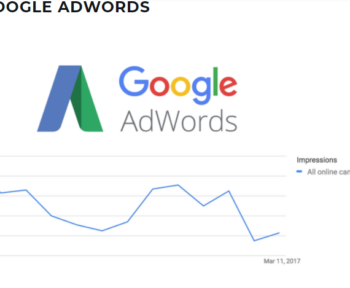Search engine optimization (SEO) is a valuable marketing tool that brings organic traffic, i.e. potential customers, to your website. SEO is a must, especially for small businesses and e-commerce sites. If you don’t have a big marketing budget to allocate to SEO experts, don’t worry: there are plenty of tricks for implementing a DIY SEO strategy and easy-to-use tools.
Table of Contents
How SEO Works Step by Step?
After learning the ABCs of SEO, you can decide whether to rely on a professional who will develop the optimization process to the maximum. For now, here is How SEO Works Step by Step? to follow & to get real results with SEO:
1. Define your starting point organically
Dealing with SEO means improving the positioning of your site on search engines. The first step is to understand where you are: what visibility does your site have today? Domain Overview gives you the answer.
Overall, SEMrush helps you understand how visible your domain is on mobile and desktop devices; furthermore, you can have an overview of both organic and paid traffic (for example from Google pay-per-click ads). The comprehensive reports also contain information on metrics such as backlinks.
However, an SEO audit should not only cover your site but should also include your competitors’ websites, so you can get an overview of their share of search volume in your industry. Our domain overview tool highlights your top organic competitors, that is, the websites competing with you for the domain online. This way you can identify potential areas of growth and use them as a source of inspiration.
Set up search analytics
Other useful tools to understand where you are starting from in the world of online searches are those offered by Google and Bing. Below we offer a step-by-step guide to monitoring your domain using one of these analysis tools.
Here’s how to set up an account with Google Analytics:
- Create an account in Analytics.
- Set up your “property” (your website).
- Configure the “reporting view” on your property. This allows you to filter the data, for example, by IP address or defined sales areas.
- Analytics will then ask you to enter a site tracking code, allowing Google Analytics to collect the data.
- Then you can start consulting the data. This guide from Google explains how to filter the different views to focus on the data you consider most relevant.
Here’s how to set up Bing Webmaster Tools (Bing’s version of Analytics):
- Create an account on Bing Webmaster Tools. You can use your Facebook, Google, or Microsoft account.
- Add the website to your account.
- You will need to prove that you are the owner of the site. Bing offers three ways to do this: authenticate with an XML file, authenticate with a meta tag, or add a CNAME record to DNA.
- You can then upload your sitemaps and start tracking data. This getting started guide explains the process in detail.
2. Research relevant keywords and search queries
Keywords are the core of a solid SEO campaign. They are words or phrases that users enter into a search engine like Bing or Google that takes them to your site. Identifying target keywords that are relevant to your site’s content and match your audience’s search intent is a crucial step. You can use a keyword research tool to find out which keywords perform best.
At SEMrush we have several tools that help you with keyword research. Our organic search tool allows you to see the most searched keywords and those that drive the most traffic to your competitors’ sites. You can easily discover who your organic competitors are, who is competing with you for positions at the top of SERPs (search engine results pages), how domain ranking is changing, and much more!
We also offer tools that allow you to monitor site performance with certain content and keywords. You can find related keywords that will help you decide which content to focus on with your future blog posts (especially those that can give you great ranking results, with little effort).
3. Publish optimized content

Once you have identified good keywords, you can start creating high-quality content that will form the most important part of your content marketing strategy. Wondering how to create content for SEO? You can follow these simple rules:
- Naturally, include a primary long-tail keyword in the text. Don’t fill the text with keywords. Search engine algorithms do not react well to too many keywords.
- Include the main keyword in the title as an H1 heading.
- Choose secondary keywords that logically complement the primary keyword. So, if you’re creating a page about root canals for a dental office website, the primary word might be “root canal” and the secondary word might be “cavities.” For content you create in the future, you might consider developing pages for secondary keywords and then creating internal links to those pages.
- Add rich content, such as images, infographics, or videos, at least once. Search engines recognize that this adds value to the content and will rank the page higher as a result.
- Include the main keyword in the title tag and meta description.
- Consider using any plugin available to optimize your content. For example, WordPress offers many plugins that help improve your on-page SEO efforts.
- If you update content, make sure new pieces load on the old landing page or delete old content before creating new content. This will help you avoid duplicate content, which could hurt your rankings.
- If you’re having trouble updating meta tags, text, and other page elements because your developer team is dealing with a large backlog of change requests, try a solution like PageImprove. PageImprove and Edge SEO solutions allow you to make instant, indexable, and reversible changes to your website.
4. Analyze backlinks
Search engines prioritize content that is valuable to the end user. Google has even established value evaluation criteria, the EAT principle: competence, authority, and trustworthiness. Backlinks (links from other websites to yours) help establish your EAT.
Links from high-authority, high-traffic domains are the most valuable and worth pursuing as part of your digital marketing strategy.
Backlink analysis gives you details about referring domains, including anchor texts and IP distribution. You can also use the Backlink Gap tool to identify which websites in your niche have earned the most backlinks in the past. This is a fantastic way to find out what backlinks you are missing and fill in those gaps. There are many effective methods for link building, from creating infographics to writing guest posts on other platforms.
5. Dig deeper into technical issues
Content aside, your SEO strategy should also take into account some technical aspects. This technical SEO checklist is a great place to start. For example, you should be sure to use HTTPS, a popular search engine ranking factor, because it offers a level of encryption that ensures the security of data passing through your site, including potentially sensitive customer data. The guide mentioned above also provides tips on how to improve page speed, fix crawl errors, and much more.
6. Stay up to date
Search engine optimization is a constantly evolving field. That’s why some specialists dedicate their entire careers to it! Search engines like Google constantly update their algorithms and change the factors that influence results pages (SERPs).
Following industry bloggers and keeping up to date with SEO news will help you stay on top of the latest developments. The Google Search Central blog, formerly Google’s webmaster blog, is a great place to start.
Conclusion
In the grand tapestry of online presence, SEO stands as the masterful weaver, intertwining keywords, content, and technical prowess to conjure digital prominence. By understanding the step-by-step intricacies of this magical process, businesses can transform their online existence from mere websites to authoritative realms, commanding the attention of both search engines and the users they seek to enchant. Embrace the art of SEO, and let your digital journey become a captivating tale of visibility and success.






0 Comments
Mail Tm
There is definately a lot to find out about this subject. I like all the points you made